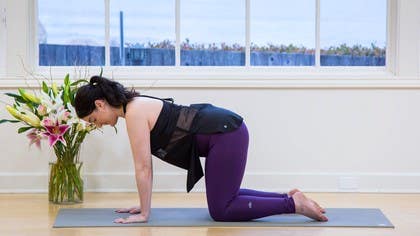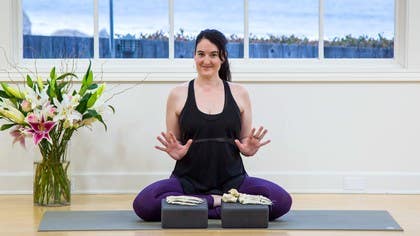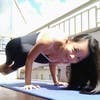Description
About This Video
Transcript
Read Full Transcript
Our hands and our feet share a lot of similarities, but their differences are, make a big difference in our yoga practice. Let's take a look. This is a model of your hand, skeletal model of your hand and one of your foot. Now we have similar situation. We've got a bunch of small bones. They're called carples in the hands, tarsals in the feet. We've got metacarpals beyond and metatarsals beyond. And then we've got phalanges of the fingers and the toes. But look at their proportions. So the carpals make up, let's say, one fifth of your hand span, more or less. The reverse here, the phalanges of the foot make up about maybe a fifth of your foot span. Look at the tarsals. They make up about half of your foot span, whereas your phalanges of your hands make up about half of your hand span. So it kind of has the inverse relationship, which makes the feet powerful, stabilizing walkers, right? They can translate weight. They've got these beautiful arches that can help give you a bigger bang for your buck in movement. They've got tiny little toes that can help balance and fine tune and push off. And they're taking the brunch of the weight with these big old tarsals. Now our hands well suited for texting, for a fine little motor action of your hands and fingers creating and touching. But they're not going to be really well suited to bear your body weight, right? Teeny tiny carpals, big old phalanges. It's just not really inherent in the skeletal system, right? We can do a few things that help might give us better success at this. First thing your teacher tells you is spread your fingers. Now when you get to be a yoga pro, all of a sudden you can manically spread your fingers, almost like jazz hands, and you can get really quite aggressive. This is just as potentially injurious as what most beginners come into the room with, kind of a little bit of a lobster claw because they've been at their computers or texting or doing a lot of action in their hands during the day. So we want to split the difference. Yes, spread your fingers, but just kind of a normal human spread of your fingers, just a little bit apart. Because we have these long phalanges, let's use them for something. We're spreading out so we're making a kind of a wider base, and then we're pressing down through all the knuckles and fleshy part of our fingers and hands. This gives us more support, almost like your fingers are a little kind of claws clawing slightly into the floor. So it takes some of the pressure off those teeny tiny carpals. Now if you look at the carpals on your own hand or on mine, you'll notice they're not flat, like a paved road, but more like a cobblestone road with like a little bit of a dip or a tunnel. The negative space of that tunnel or the arch here is the carpal tunnel. So through that tunnel run a bunch of nerves, blood vessels, some muscles, ligaments, and of course tendons and bones. And they have to get through this kind of narrow tunnel before they fill and spread out into the hands and fingers below. That's a lot of spaghetti and a small bowl. We have of course a sheet of saran wrap or fascia that covers it, keeping everything in place. But because we tend to be at our computer or texting for a large portion of our day, we get these little claws, we tighten this area, and then sometimes we come into a yoga practice and we put weight on our hands in this way. It can really irritate this carpal tunnel. We may even develop a carpal tunnel syndrome, which is when this fascia freaks out, the stuff underneath gets compressed. We might have nerve pain or tingling in the fingers. One way to help not bring that on with a yoga practice to actually be a tonic for the hands and fingers is to find proper body mechanics when you place your weight on your hands.
Your Body on Yoga: Upper Appendage
Comments
You need to be a subscriber to post a comment.
Please Log In or Create an Account to start your free trial.












